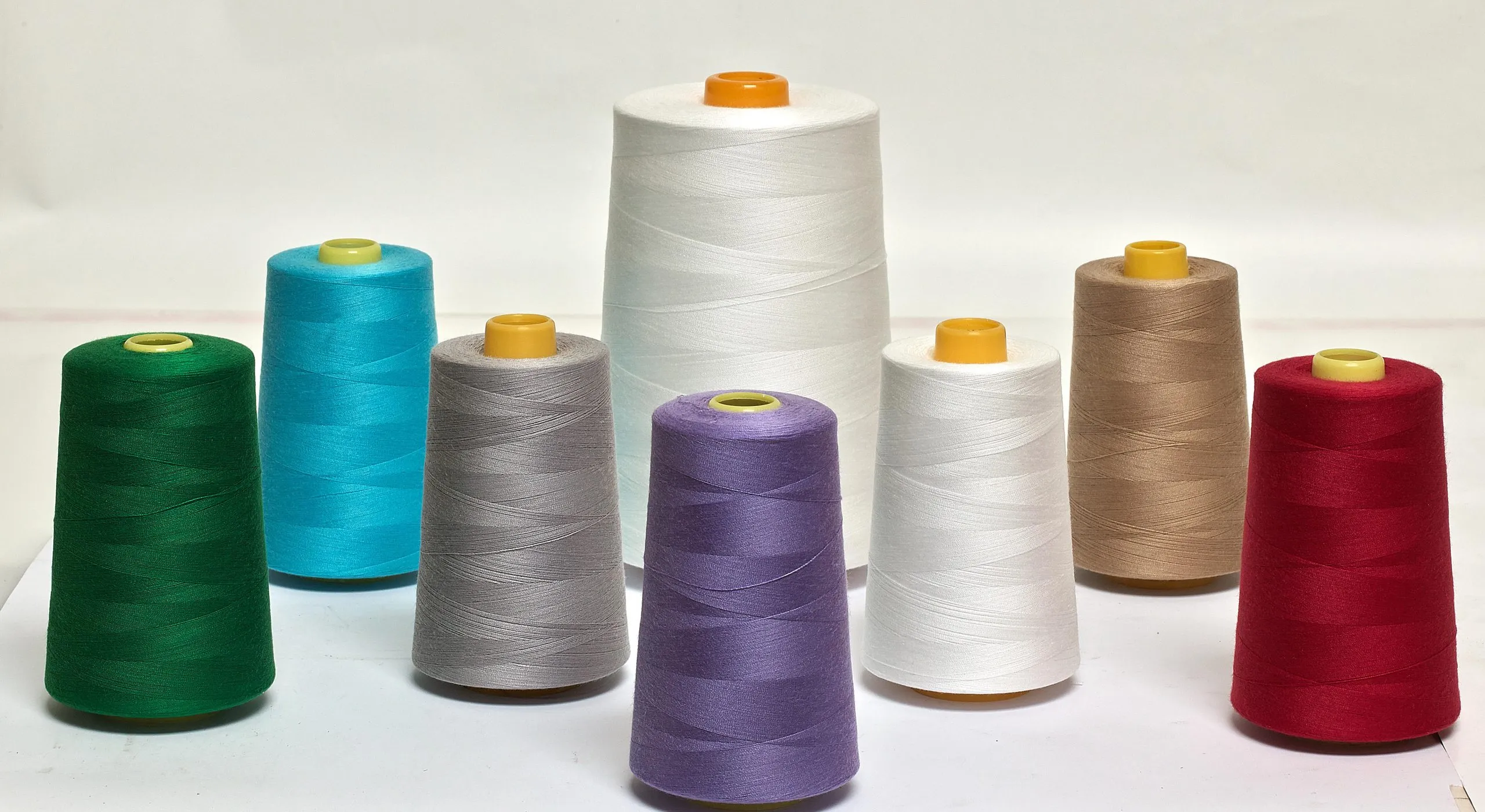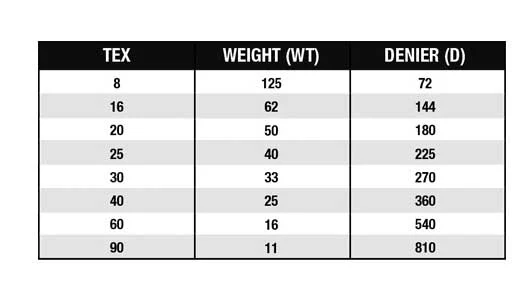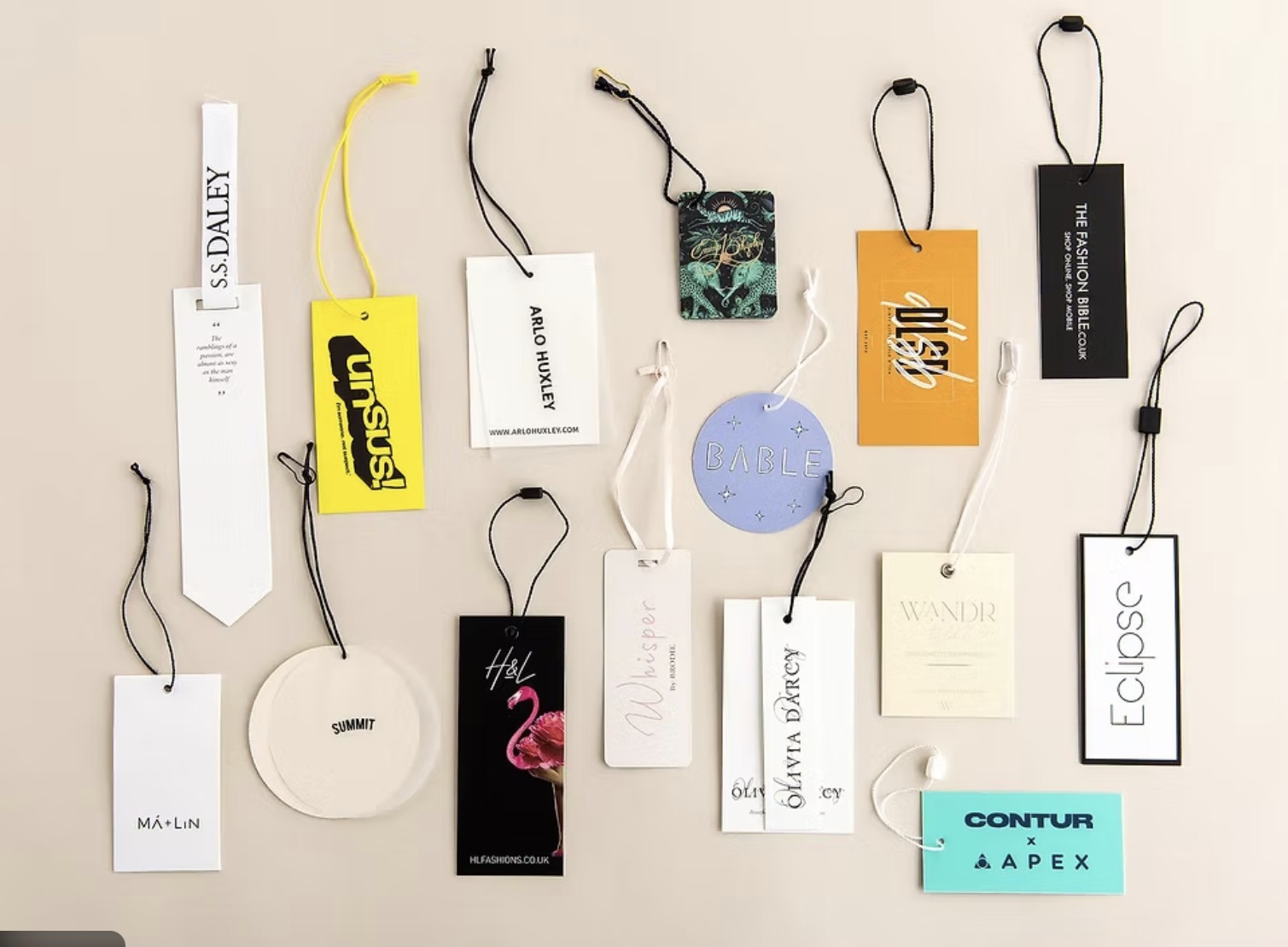
Swing tags can be made from a wide range of materials each offering a different look, feel, and level of durability. The right choice depends on your brand style, budget, and sustainability goals. Below are the most popular materials used for swing tags, along with their pros and cons.
The Materials Are Commonly Used for Swing Tags
Paperboard / Cardboard Swing Tags
Paperboard is the classic choice for most fashion and retail brands. It’s smooth, printable, and highly adaptable to any design style from minimalist black-and-white to bold, full-colour prints. This material works beautifully with finishes such as matte coating, lamination, foil stamping, or embossing, making it ideal for both budget and premium lines. It’s reliable, cost-effective, and easy to produce at scale.
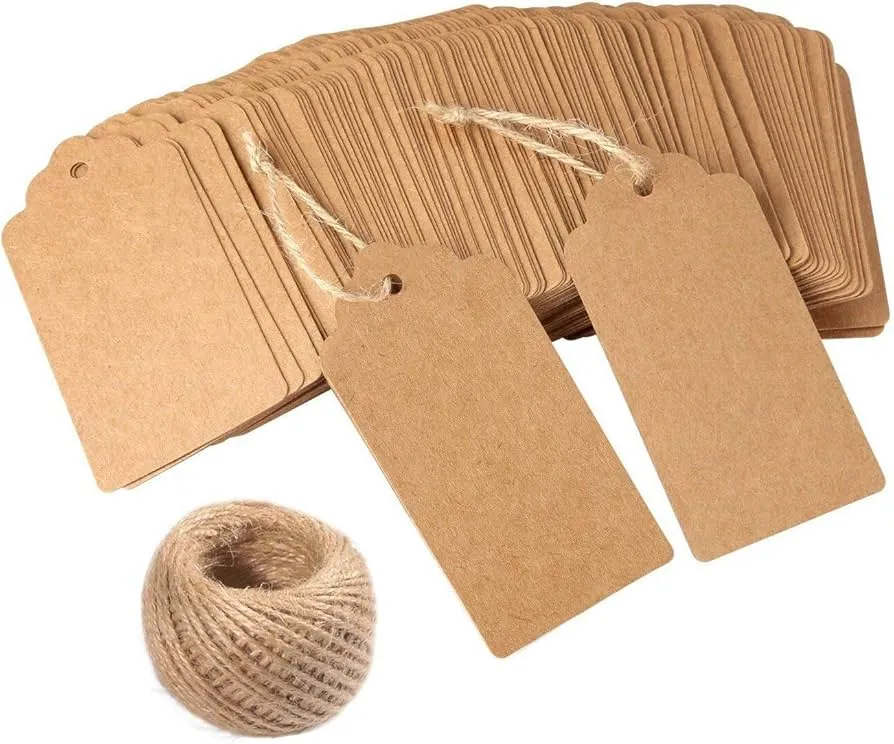
Pros:
- Excellent print quality and colour reproduction
- Compatible with many finishes (foil, embossing, lamination)
- Lightweight and cost-effective
- Ideal for large-volume production
Cons:
- Not moisture-resistant without coating
- Can bend or crease if too thin
- Less durable for outdoor or heavy-duty products
Kraft Paper Swing Tags
Kraft paper swing tags offer a rustic, natural look that fits perfectly with sustainable or handmade products. Made from unbleached pulp, kraft tags have a warm, earthy tone that conveys honesty and simplicity. They pair beautifully with minimalistic designs, black ink printing, or eco-focused branding. If your brand emphasizes “green” values, kraft paper immediately tells that story before the customer even reads a word.
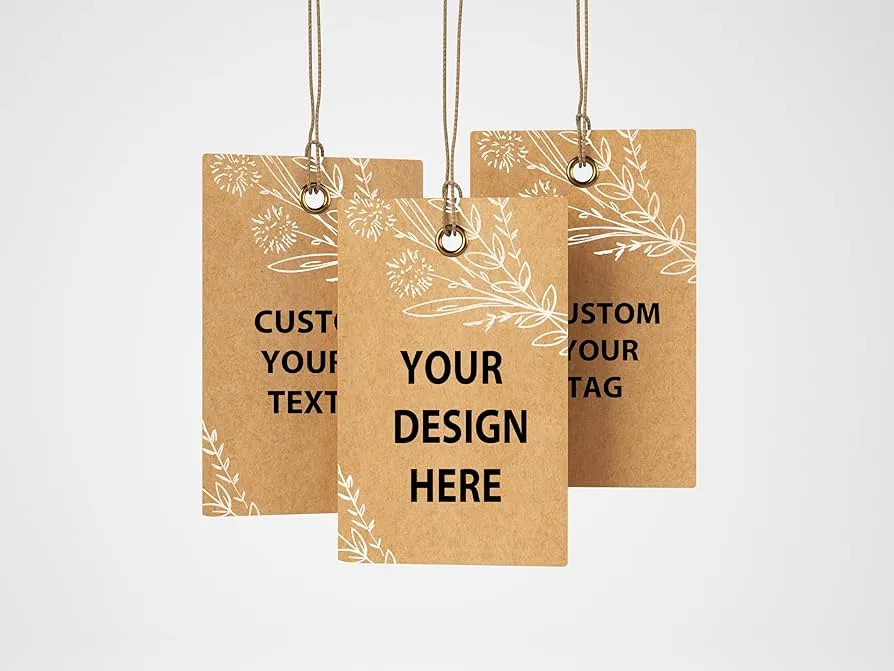
Pros:
- Eco-friendly and recyclable
- Strong, durable, and resistant to tearing
- Has a natural, authentic appearance
- Great for sustainable or handmade brands
Cons:
- Limited colour printing (brown base affects bright tones)
- Less suitable for luxury or high-gloss designs
- Absorbs moisture if not coated
Recycled or Eco Paper Swing Tags
Recycled swing tags are made from post-consumer or post-industrial fibres, offering an environmentally friendly option without sacrificing quality. They can mimic standard paperboard or kraft depending on the finish, and modern recycled stock prints beautifully. This material supports your sustainability messaging while giving a polished, responsible appearance. It’s the ideal balance between professional presentation and eco-conscious branding.

Pros:
- Environmentally responsible choice
- Available in many textures and colours
- Accepts most printing and finishing techniques
- Enhances brand image for eco-friendly positioning
Cons:
- May have higher cost than regular card
- Colour tone can vary between batches
- Slightly less smooth surface for detailed printing
Plastic (PVC / PET) Swing Tags
Plastic swing tags bring durability and modern styling to your products. Common in swimwear, sportswear, or industrial goods, they’re waterproof, flexible, and long-lasting. Their glossy or frosted surfaces allow sharp printing and vibrant colours that won’t fade easily. For brands seeking a sleek, modern presentation that can handle tough conditions, plastic tags deliver strength and shine.
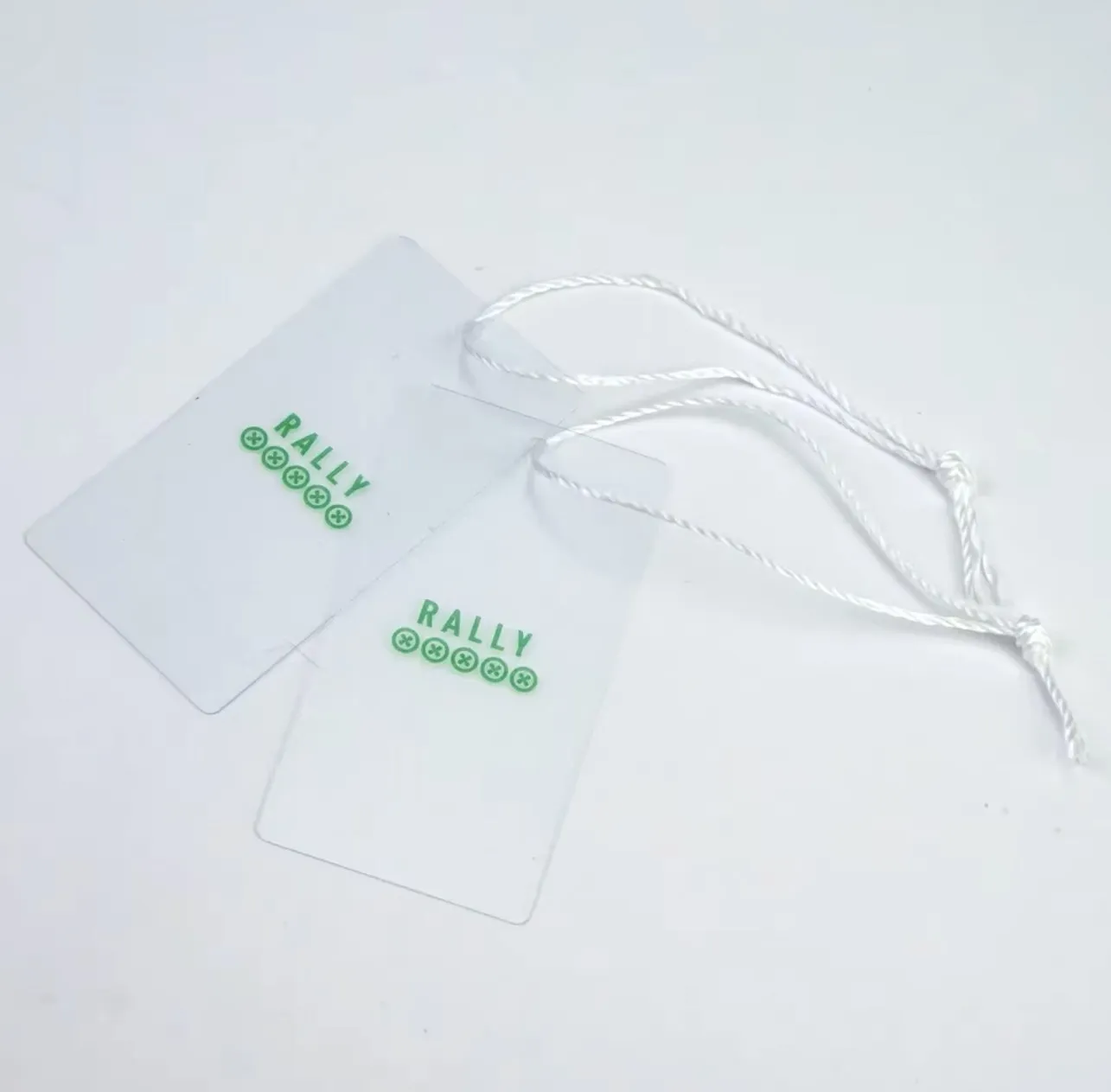
Pros:
- Highly durable and water-resistant
- Ideal for products exposed to moisture or humidity
- Can be transparent or frosted for a modern look
- Long-lasting colour and print quality
Cons:
- Not eco-friendly unless made from recycled plastic
- Heavier and more expensive to produce
- Can feel less “premium” for certain fashion brands
Fabric / Textile Swing Tags
Fabric swing tags instantly elevate a garment’s perceived value. Made from cotton, canvas, linen, or satin, they offer a tactile softness that feels personal and premium. These tags work wonderfully for handmade items, luxury apparel, or eco collections that highlight craftsmanship. Because each tag can be sewn, printed, or embroidered, they’re also a great way to show artistic character.
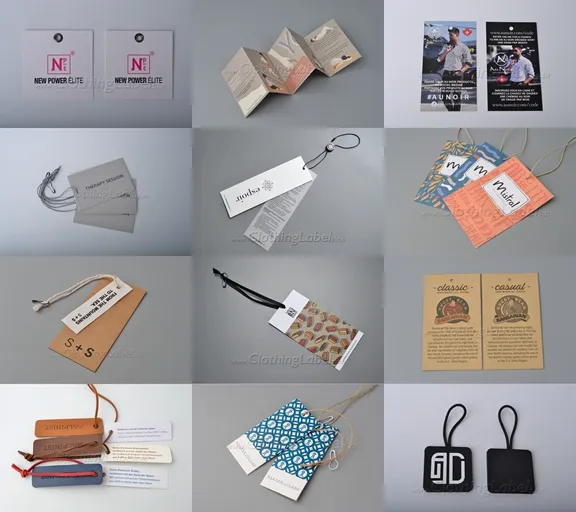
Pros:
- Soft, premium, and tactile look
- Reusable or collectible by customers
- Enhances handmade or boutique branding
- Can match the garment’s fabric for cohesive style
Cons:
- Higher production cost
- Limited print clarity for detailed graphics
- Requires careful handling during production
Wood or Bamboo Swing Tags
Wooden and bamboo swing tags make a strong statement of quality and sustainability. They’re solid, elegant, and reusable, often laser-engraved for precision and durability. These tags appeal to brands aiming for a natural, eco-luxury look that stands apart from typical paper options. Because they last long and look distinctive, they can even double as collectible brand keepsakes.

Pros:
- Eco-friendly and biodegradable
- Strong, durable, and premium-looking
- Distinctive natural texture and aesthetic
- Reinforces sustainability values
Cons:
- More expensive than paper or plastic
- Limited printing options (mostly engraving or etching)
- Heavier and less flexible for thin fabrics
Metal Swing Tags
Metal swing tags exude sophistication and strength. Usually made from aluminium, steel, or brass, they are durable and visually striking perfect for luxury leather goods, denim, or accessories. Their weight and metallic finish instantly create a high-end impression that says “premium quality.” A single metal tag can transform ordinary packaging into a collector’s experience.
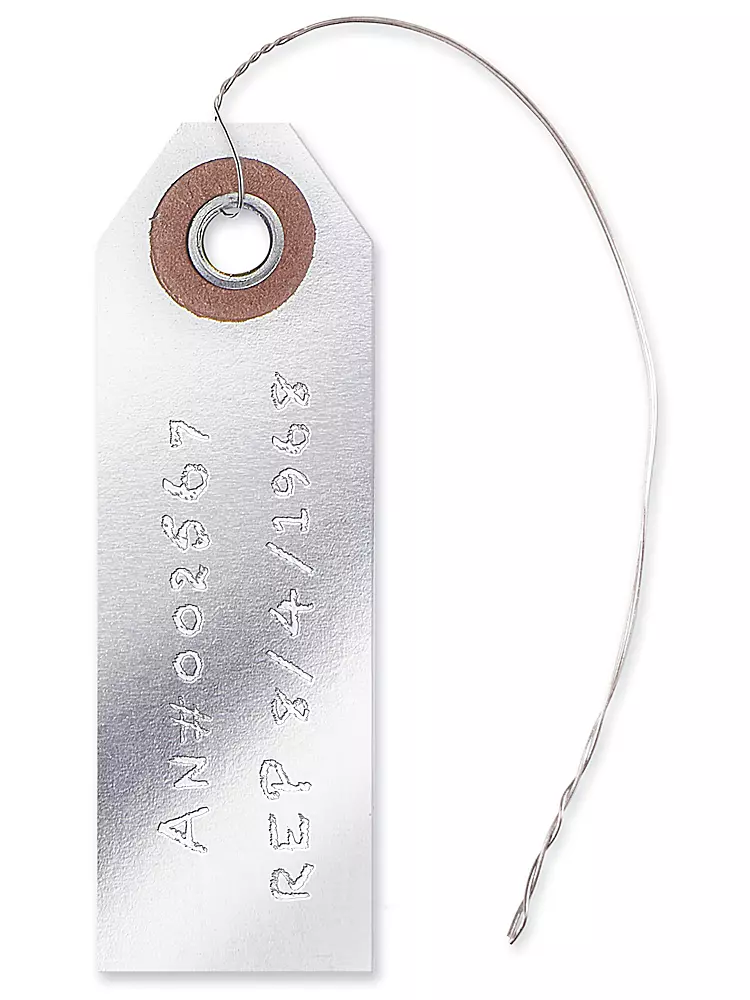
Pros:
- Extremely durable and long-lasting
- Luxurious, high-perceived value
- Resistant to water and wear
- Excellent for premium branding
Cons:
- Expensive production and shipping cost
- Heavy; unsuitable for lightweight garments
- Limited colour options and complex production process
Conclusion / Final Words
Every material tells a story and the story you choose should align with your brand’s identity and customer expectations. Paperboard is practical and versatile, kraft feels organic, recycled stock signals responsibility, and fabric or metal communicates craftsmanship and luxury. Selecting the right swing tag material means finding the perfect balance between design, durability, cost, and brand emotion so that even your smallest tag leaves a lasting impression. Choosing the right material for your swing tag depends on your brand’s identity, target audience, and product type.
- For affordable fashion, paperboard remains a versatile choice.
- For eco-conscious brands, kraft or recycled paper fits best.
- For luxury or high-impact branding, fabric, wood, or metal stand out.
A well-chosen swing tag material not only enhances your brand story but also reflects your values sustainability, craftsmanship, or innovation every time a customer picks up your product.
FAQs Materials Are Used for Swing Tags?
In short, What is the best material for swing tags?
The best material depends on your brand’s goals and product type. Paperboard is the most common choice because it’s affordable, versatile, and offers excellent print quality. Kraft paper suits eco-friendly or handmade products, while fabric, wood, or metal are ideal for luxury or collectible items. Consider your audience, budget, and sustainability values before choosing the right one.
Are paper swing tags durable enough for retail use?
Yes, when made from high-quality paperboard (typically 300–400gsm), paper swing tags are durable enough for normal retail handling. Adding a matte or gloss lamination also improves water resistance and stiffness. However, for products exposed to moisture or outdoor conditions, materials like plastic or coated stock may perform better.
Why do some brands use kraft paper for swing tags?
Kraft paper offers a natural, earthy look that instantly communicates authenticity and sustainability. It’s strong, recyclable, and pairs well with minimalist design. Many organic, handmade, or eco-focused brands prefer kraft because it visually supports their environmental message while keeping production costs reasonable.
What are the advantages of using recycled paper tags?
Recycled paper swing tags allow brands to reduce environmental impact without compromising design quality. They can be printed, embossed, or laminated just like regular card stock. These tags send a clear signal to eco-conscious consumers that your company values responsible manufacturing and sustainable choices.
Are plastic swing tags a good idea for clothing?
Plastic swing tags (made from PVC, PET, or polypropylene) are highly durable, waterproof, and long-lasting, making them great for swimwear, sportswear, or outdoor gear. They also allow creative transparency effects. However, they’re not biodegradable, so they may not align with eco-friendly branding unless made from recycled plastic.
What makes fabric swing tags special?
Fabric swing tags stand out because of their soft, premium texture. Made from cotton, linen, or satin, they add a handcrafted and elegant touch to the product. They’re especially suitable for luxury, boutique, or artisan brands that value craftsmanship and want customers to feel the quality right away.
Are wood or bamboo swing tags sustainable?
Yes. Wood and bamboo are renewable, biodegradable materials that provide a strong eco-luxury appeal. These tags can be laser-engraved for a timeless look and reused by customers as decorative keepsakes. However, they’re heavier and more costly to produce than paper tags, so they’re best suited for high-end or limited-edition products.
Why do luxury brands use metal swing tags?
Metal tags instantly convey exclusivity and prestige. Their weight and shine create a strong impression of quality, making them perfect for designer denim, leather goods, or premium accessories. While expensive to produce, they last indefinitely and serve as collectible pieces that enhance brand perception.

